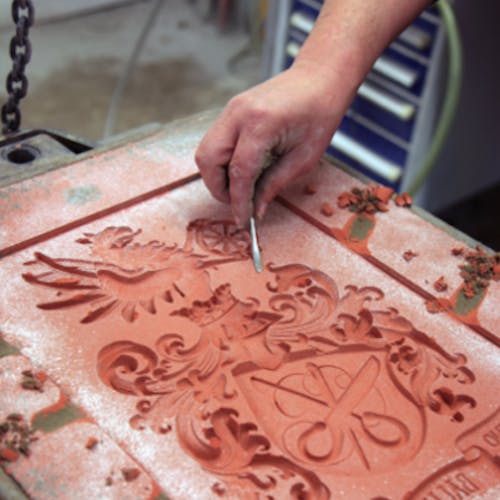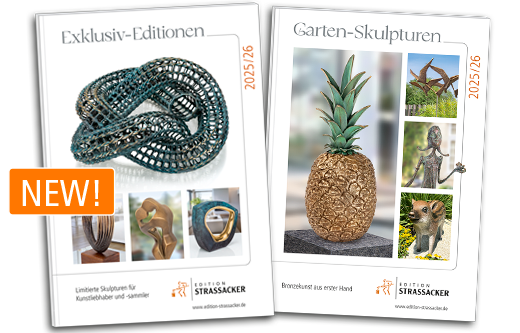Sand casting
Sand casting is a proven technique for reliefs, plaques, coats of arms and small sculptures with small undercuts. The moulding sand used in this case has a special consistency. Its fineness allows a detailed reproduction of the model to be moulded from silica sand, bonding clay and water. The moulding sand gains its strength through mechanical stamping or pressing.


Made of solid material – usually plasticine, wax, plaster or wood – the artist’s model is properly disassembled before the art former shapes it in two-part or multi-part moulding boxes in sand. If the model has the mould incline required for moulding, a two-part sand mould is usually sufficient. In the case of cast parts with undercuts, a multi-part sand mould must be created in order to remove the model from the mould. The gating system is then cut with the necessary inlets, pouring funnels and ventilation channels in these sand moulds with the negative representation of the model. Thereafter, the moulding boxes are clamped together and the molten bronze is poured in. After solidification, the mould is shattered – the caster speaks of "lost wax" – the cast work is removed and handed over to the chaser for further processing.



